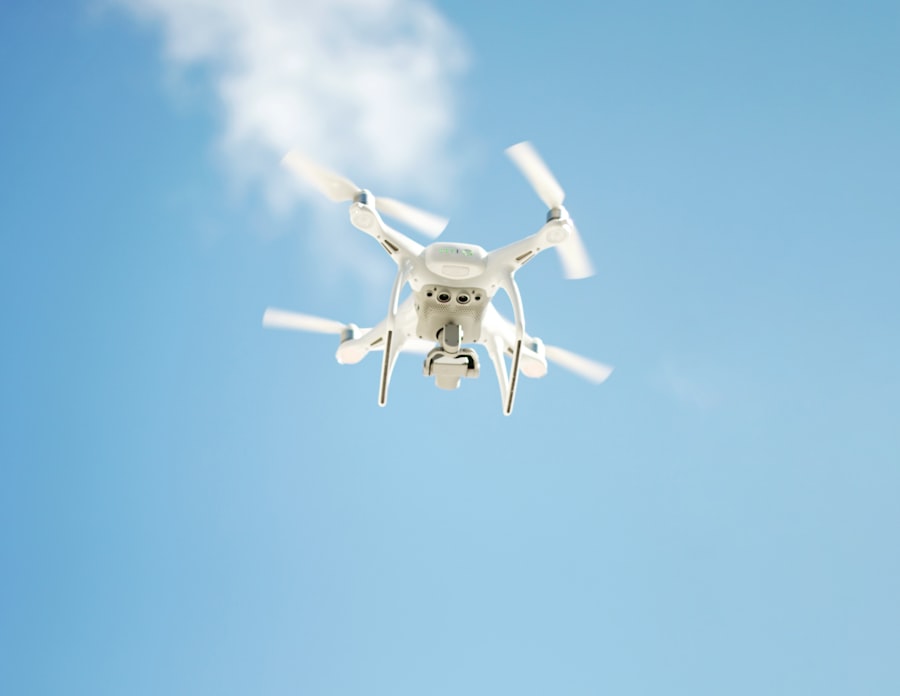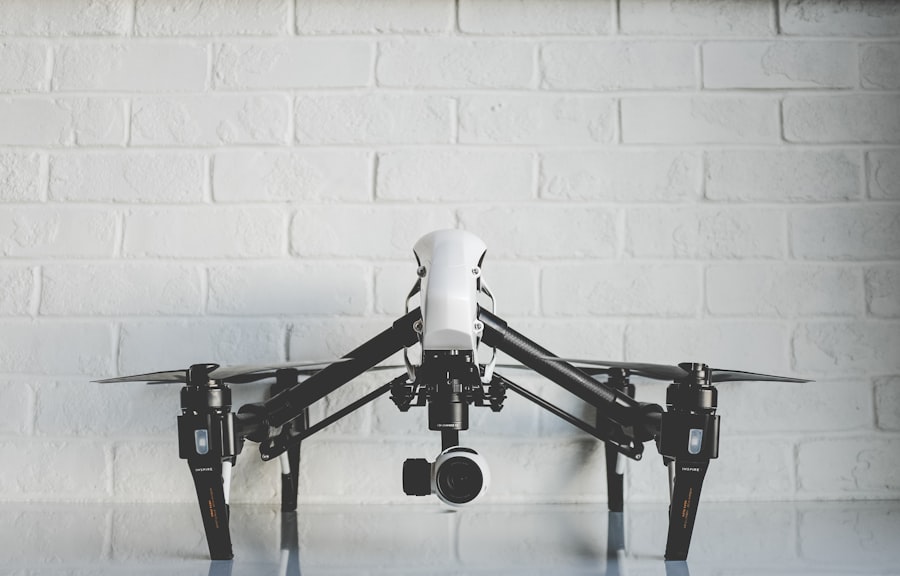The integration of robotics into air transport has revolutionized the aviation industry, marking a significant shift in how aircraft are manufactured, maintained, and operated. As technology continues to advance at an unprecedented pace, the role of robotics has expanded beyond mere assistance to becoming a cornerstone of modern aviation. From the assembly lines of aircraft manufacturing to the intricate systems that manage air traffic, robotics is enhancing efficiency, safety, and precision.
This transformation is not merely a trend; it represents a fundamental change in the operational paradigms of air transport, driven by the need for increased productivity and reduced human error. As we delve deeper into the various applications of robotics within this sector, it becomes evident that the implications extend far beyond operational efficiency. The introduction of automated systems and robotic technologies is reshaping workforce dynamics, necessitating new skills and training for personnel in the aviation industry.
Moreover, the potential for enhanced safety protocols and reduced operational costs presents a compelling case for the continued investment in robotic technologies. As we explore the multifaceted roles of robotics in air transport, it is crucial to consider both the immediate benefits and the long-term implications for the industry as a whole.
Key Takeaways
- Robotics in air transport encompasses a wide range of applications, from aircraft manufacturing to maintenance, air traffic control, cargo handling, and passenger experience.
- Automation has revolutionized aircraft manufacturing, leading to increased efficiency, precision, and safety in the production process.
- Robotics plays a crucial role in aircraft maintenance, enabling tasks to be performed more quickly, accurately, and safely, ultimately reducing downtime and improving aircraft reliability.
- Autonomous air traffic control systems are being developed to enhance the efficiency and safety of air traffic management, with the potential to revolutionize the way airspace is managed.
- Robotic cargo handling and logistics are transforming the way goods are transported by air, with automated systems streamlining processes and improving efficiency.
Automation in Aircraft Manufacturing
From Labor-Intensive to Automated
The aircraft manufacturing process has undergone a significant transformation with the advent of automation and robotics. Traditionally characterized by labor-intensive tasks, the assembly of aircraft has now embraced advanced robotic systems that streamline production and enhance precision. Robotic arms equipped with sophisticated sensors and artificial intelligence capabilities are now commonplace on assembly lines, performing tasks such as welding, painting, and component assembly with unparalleled accuracy.
Enhanced Efficiency and Reduced Error
This shift not only accelerates production timelines but also significantly reduces the likelihood of human error, which can lead to costly mistakes and safety concerns. Furthermore, automation in aircraft manufacturing has led to a reconfiguration of workforce roles within the industry. While some traditional jobs may be diminished due to increased automation, new opportunities are emerging that require specialized skills in robotics programming, maintenance, and oversight.
A New Era of Human-Robot Collaboration
The need for a highly skilled workforce capable of managing these advanced systems is paramount. As manufacturers invest in training programs to equip employees with the necessary skills, the industry is poised for a future where human-robot collaboration becomes the norm rather than the exception. This evolution not only enhances productivity but also fosters innovation as engineers and technicians work alongside robots to push the boundaries of what is possible in aircraft design and manufacturing.
Robotics in Aircraft Maintenance

The maintenance of aircraft is another critical area where robotics is making significant strides. Traditionally, aircraft maintenance has been a labor-intensive process requiring extensive manual inspections and repairs. However, with the introduction of robotic technologies, this landscape is changing dramatically.
Drones equipped with high-resolution cameras and sensors are now employed to conduct thorough inspections of aircraft exteriors, identifying potential issues such as structural damage or corrosion that may not be easily visible to the naked eye. This capability not only enhances safety by ensuring that any problems are detected early but also reduces downtime by expediting the inspection process. In addition to drones, robotic systems are being utilized for more complex maintenance tasks.
For instance, robotic arms can perform intricate repairs in hard-to-reach areas of an aircraft, ensuring that maintenance crews can address issues more efficiently and effectively. The integration of predictive maintenance algorithms powered by artificial intelligence further enhances this process by analyzing data from various sensors on the aircraft to predict when maintenance will be required. This proactive approach minimizes unexpected failures and extends the lifespan of critical components.
As robotics continues to evolve in this domain, it promises to redefine standards for aircraft maintenance, ultimately leading to safer skies and more reliable air travel.
Autonomous Air Traffic Control Systems
The management of air traffic is one of the most complex challenges faced by the aviation industry, and robotics is poised to play a transformative role in this area as well. Autonomous air traffic control systems leverage advanced algorithms and machine learning techniques to optimize flight paths, manage congestion, and enhance overall safety in busy airspace. By analyzing real-time data from various sources—such as weather conditions, flight schedules, and air traffic patterns—these systems can make informed decisions that improve efficiency while reducing delays for passengers.
Moreover, the implementation of autonomous systems in air traffic control has the potential to alleviate some of the burdens placed on human air traffic controllers. As air traffic volumes continue to rise globally, the demand for efficient management solutions becomes increasingly critical. By automating routine tasks and providing decision support tools for controllers, robotic systems can enhance situational awareness and allow human operators to focus on more complex decision-making processes.
This synergy between human expertise and robotic efficiency could lead to a safer and more streamlined air traffic management system that meets the demands of modern aviation.
Robotic Cargo Handling and Logistics
In addition to passenger transport, robotics is also making significant inroads into cargo handling and logistics within the aviation sector. The movement of goods via air freight is a vital component of global trade, and optimizing this process is essential for maintaining competitiveness in an increasingly interconnected world. Automated systems are being deployed at airports to streamline cargo handling operations, from loading and unloading aircraft to managing inventory in warehouses.
Robotic vehicles equipped with advanced navigation systems can transport cargo seamlessly across airport facilities, reducing transit times and minimizing human labor costs. Furthermore, robotics enhances accuracy in cargo handling by minimizing errors associated with manual processes. Automated systems can track shipments in real-time, ensuring that packages are loaded onto the correct flights and reducing instances of lost or misrouted cargo.
The integration of robotics with data analytics allows logistics companies to optimize their operations further by predicting demand patterns and adjusting resources accordingly. As e-commerce continues to grow and consumer expectations for rapid delivery increase, the role of robotics in cargo handling will become even more critical in ensuring that logistics operations remain efficient and responsive.
Impact of Robotics on Passenger Experience

Enhancing Passenger Experience through Robotics
The influence of robotics extends beyond operational efficiencies; it also significantly impacts passenger experience within air transport. From check-in kiosks equipped with artificial intelligence to automated baggage handling systems, technology is reshaping how travelers interact with airlines and airports. Self-service kiosks allow passengers to check in quickly without waiting in long lines, while automated baggage drop-off systems streamline the process further by enabling travelers to tag their luggage independently.
Convenience and Stress Reduction
These innovations not only enhance convenience but also reduce stress associated with travel. By providing passengers with more control over their journey, robotics and artificial intelligence help to alleviate the anxiety often linked to air travel.
Improving Safety and Security Measures
Moreover, robotics is enhancing passenger safety through improved security measures at airports. Advanced screening technologies powered by artificial intelligence can analyze baggage more effectively than traditional methods, identifying potential threats while expediting the screening process for travelers.
A Seamless Travel Experience
Additionally, robots are being deployed in airports as information assistants, guiding passengers through terminals or providing real-time updates on flight statuses. As these technologies continue to evolve, they promise to create a more seamless travel experience that prioritizes both efficiency and safety.
Future Trends in Robotics in Air Transport
Looking ahead, the future of robotics in air transport appears promising as technological advancements continue to unfold at a rapid pace. One notable trend is the increasing integration of artificial intelligence with robotic systems across various facets of aviation. As AI algorithms become more sophisticated, they will enable robots to learn from their environments and adapt their behaviors accordingly.
This adaptability could lead to even greater efficiencies in manufacturing processes, maintenance protocols, and air traffic management systems. Additionally, as sustainability becomes a focal point for the aviation industry, robotics will play a crucial role in developing eco-friendly practices. Automated systems can optimize fuel consumption during flights by analyzing real-time data on weather conditions and flight paths, contributing to reduced carbon emissions.
Furthermore, advancements in electric and hybrid aircraft technologies may lead to new opportunities for robotic applications in design and manufacturing processes aimed at creating greener alternatives for air travel. As we move forward into an era defined by innovation and sustainability, robotics will undoubtedly remain at the forefront of transforming air transport into a safer, more efficient, and environmentally responsible industry.
If you’re interested in how technology is transforming industries, you might find the article “How Robotics is Revolutionizing Air Transport” intriguing. For further reading on technological advancements, consider exploring this article about the best free software for 3D modeling in 2023. It provides insights into tools that are shaping the future of design, potentially complementing the innovations in robotics and air transport by offering sophisticated modeling capabilities that can be used in designing new robotics systems and components for the aviation industry.
FAQs
What is robotics in air transport?
Robotics in air transport refers to the use of automated systems and machines to perform tasks related to the operation and maintenance of aircraft, as well as the handling of cargo and passengers at airports.
How is robotics revolutionizing air transport?
Robotics is revolutionizing air transport by improving efficiency, safety, and reliability in various aspects of the industry, such as aircraft manufacturing, maintenance, cargo handling, and passenger services.
What are some examples of robotics in air transport?
Examples of robotics in air transport include automated baggage handling systems at airports, robotic arms for aircraft maintenance and assembly, autonomous ground vehicles for cargo transportation, and drones for aircraft inspections.
What are the benefits of using robotics in air transport?
The benefits of using robotics in air transport include increased productivity, reduced operational costs, improved safety and security, enhanced accuracy and precision, and the ability to perform tasks in challenging or hazardous environments.
What are the challenges of implementing robotics in air transport?
Challenges of implementing robotics in air transport include the initial investment costs, integration with existing infrastructure and systems, regulatory and safety considerations, as well as the need for specialized training and maintenance of robotic equipment.

